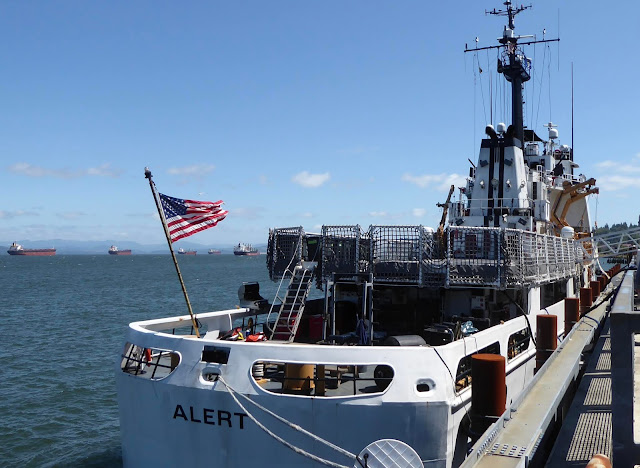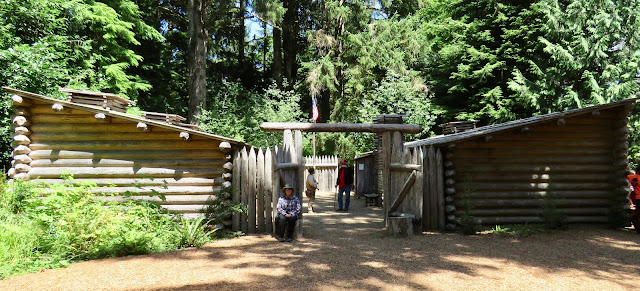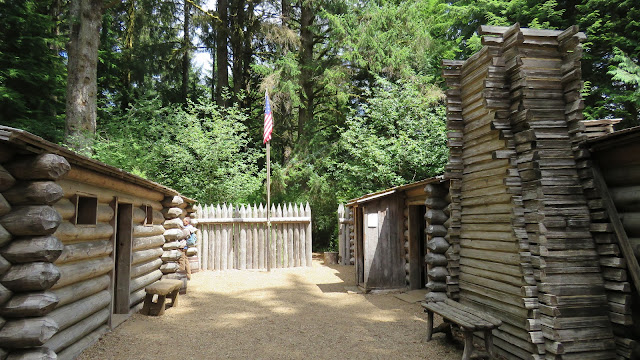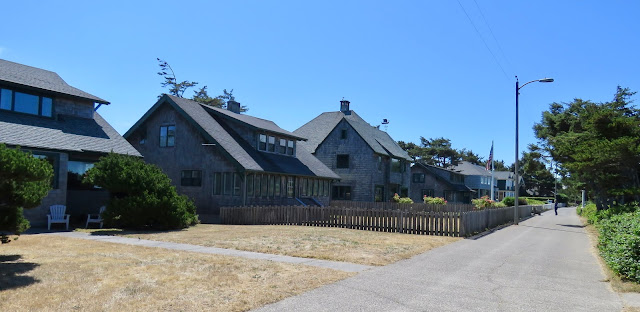Carol writes: For many months we had been anticipating our 2-week stay in Bothell, Washington,
just outside of Seattle. We had plans for a mini family reunion with my cousin Michele, who has lived in Seattle for the better part of 20 years, and my brother and his wife, who were flying out from Toledo to meet up with us to share a week in our RV.
We had been warned that traffic and parking in the Seattle area was a step wilder than insane, so prior to Greg and Shirl’s arrival we decided to scope out public transportation into the city from our campground in Bothell. A 45-minute bus ride worked like a charm, and it wasn’t long before Michele and I were hugging like cousins who hadn’t seen each other in 15 years.
 |
| Cousins |
Michele gave us a brief introduction to where she lives in the Queen Anne District of Seattle, an area known for steep hills graced with multicultural restaurants and charming boutiques. In a relaxing grassy area around the International Fountain at Seattle Center, we got our first “tourist” pics with Seattle’s iconic Space Needle in the background.
Built for the 1962 World’s Fair, the delightful multicultural flavor of big-city Seattle was on full display at the International Fountain and in “uptown” Queen Anne. A yummy Thai dinner together was the perfect cap to a lovely first day in the big city.
We had a few days before brother Greg and his wife Shirley arrived, so we decided to further perfect our public transportation skills and headed by bus over to the University of Washington. Our daughter, Megan, graduated from U-Dub, so for nostalgia sake, we found our way over to where she was commissioned on the Quad.
What a proud day that was on the Quad under the canopy of the cherry trees…
This day, those famous 90-year-old Yochino cherry trees that dazzle the Quad each spring when they bloom were sturdy and big.
One of my most enjoyable reads of the past year was the book The Boys in the Boat by Daniel James Brown. This book recounted the amazing triumph of the American 8-oar rowing team over Nazi Germany during the 1936 Olympics. Against impossible odds, nine working-class boys stunned all of Berlin by winning the gold medal as Hitler looked on.
Inside Conibear Shellhouse, the 1936 Olympic wooden shell was displayed suspended from the ceiling in the dining hall.
Bronze wall plaques commemorated some of the early greats in University of Washington rowing history.
The old shellhouse used by the 1936 team wasn’t open, but I was more than satisfied with a view from the outside.
The University of Washington is one of world’s leading public research universities. Seven faculty members have won a Nobel prize. We felt it was worth a walk around campus to view some of its historic buildings, starting with the “collegiate Gothic style” Suzzallo Library.
Like a scene right out of Hogwarts, it wasn’t hard to appreciate why the Reading Room is known as the “Harry Potter Room.”
These pics are for Megan… anchoring a corner of Drumheller Fountain, the Atmospheric Sciences Building, which claimed many hours of her time…
along with Clark Hall, the ROTC building named after none other than William Clark of Lewis & Clark Expedition fame.
Tucked into the southeast corner of campus on Lake Union was Huskey Stadium, an iconic venue on the UW home turf of national champions in multiple sports.
When brother/sister day arrived, we were eager to finally meet Greg and Shirl at Sea-Tac arrivals. We had mercy on them the next day and stuck to activities closer to camp, like taking a half-hour ride on the Edmonds to Kingston auto-ferry
over to the Kitsap Peninsula in Puget Sound.
Group pictures on the ferry were definitely a must.
A few hours of casino play followed by a brief swing by tiny Poulsbo, with its Scandinavian heritage on full display, rounded out a great first day of our precious week together.
During our 1989 family trip on the road, we had inquired about taking a tour of the Boeing factory. We were very disappointed to be told that our children of 8 and 9 were too young for the tour! Fast forward to 2018, and we were pretty sure that four senior citizens would make the cut…
While waiting in the museum for the tour to start, Shirley and I had a turn at the cockpit controls. Scary, isn’t it?
Tight security during the factory tour meant no photography allowed, so I have resorted to an Internet file photo.
We found that Boeing’s production facilities in the world’s largest building by volume were on a scale beyond belief! From vantage points above the factory floor, we had incredible views of Boeing airplanes in various stages of production for their worldwide customers. This 90-minute well-orchestrated tour far surpassed the 20-minute one we would have had in 1989, so I guess it was worth the wait…
The next day, Greg and Shirley were good sports about getting on public bus transportation into the city. After navigating three very hilly Seattle city blocks, our first stop was the 73rd floor of the tallest public observatory in the Pacific Northwest—Skyview Observatory. There we were awed by 360-degree views of the entire city of Seattle,
a hint of Mt. Ranier above the clouds, Seattle sports stadiums,
and Puget Sound.
What we didn’t know when we booked the tour was that our visit coincided with the start of an airshow by the Blue Angels! It was pretty spectacular seeing Blue Angels flying in formation even with our line of sight!
And, of course, making memories together 73 floors up was priceless…
We had a marvelous mini family reunion with Michele at her apartment, which had astounding views of Seattle, Puget Sound, and the mountains in the distance. What a treat to wake up every day in such magnificent surroundings! The rooftop was the perfect place for “reunion pics.”
And margaritas in a local Queen Anne Mexican restaurant was a great place to catch up!
To round out the Seattle big-city experience, we met Michele another day at Pike Place Market,
a hustling and bustling market experience that got better once we maneuvered to less crowded hallways. But first, a stop at Seattle’s must-see tourist attraction—the “throwing of the fish” from display cases to the scale.
For coffee lovers, the original Starbucks was a curiosity worth seeing, but none of us was fanatic enough to stand in a very long line of customers waiting to buy their grande caramel macchiato.
At Michele’s recommendation, we had a lovely lunch together at Athenian Seafood Restaurant and Bar, where we had our own private cozy booth with a view of Puget Sound.
Another crazy round of various group pics was in order…
Oh, what a week that was! I’d like to think that we gave Greg and Shirl a small inkling of big-city Seattle life. It was so much fun sharing laughter and good times together with them. They sure were good sports about spending a week sleeping, eating and maneuvering in our RV’s close quarters. To my way of thinking, hooking up with cousin Michele and catching up on our lives over several decades made our week together even better. The words of Desmond Tutu summed things up pretty perfectly for me:










































































